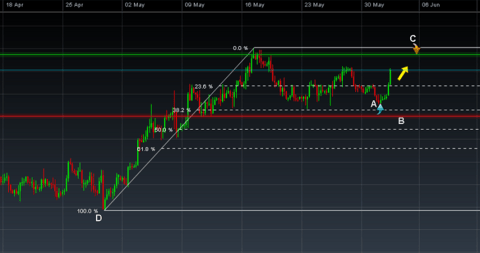Swing trading, a hybrid approach to options trading that combines elements of day trading and investing, allows traders to capture price movements over days or weeks rather than minutes or hours like daytraders. This article delves into intermediate-level swing trading strategies to help seasoned traders refine their techniques.

Image: www.pinterest.com.mx
Key Option Swing Trading Strategies
1. ATM Straddle
A straddle strategy involves buying both a call and a put option with the same strike price and expiration date. This strategy bets on a significant price movement in either direction, making it suitable for volatile markets. The trader benefits from sharp price moves while mitigating the directional risk.
2. ATM Strangle
Similar to a straddle, a strangle strategy consists of buying both a call and a put option, but with different strike prices. The call’s strike price is usually above the current market price, and the put’s below. This strategy offers slightly reduced profit potential compared to a straddle but with a higher probability of profit.

Image: www.cmcmarkets.com
3. Bull Call Spread
A bull call spread involves buying a call option (at a lower strike price) and selling another call option (at a higher strike price) with the same expiration date. This strategy benefits from moderate bullish expectations, where the underlying asset is anticipated to rise but not dramatically.
4. Bear Put Spread
A strategy designed for bearish price expectations, a bear put spread, involves buying a put option (at a higher strike price) and selling another put option (at a lower strike price) with the same expiration date. This strategy profits from falling asset prices within a specific range.
5. Calendar Spread
A calendar spread is a long-term swing trading strategy that involves buying a long-term option (with a distant expiration) and selling a short-term option (with a near-term expiration). The trader expects the asset to trend in a certain direction over an extended period.
6. Iron Condor
An iron condor is a neutral strategy that involves selling a call spread (at higher strike prices) and a put spread (at lower strike prices) with the same expiration. This strategy benefits from limited price movement within a defined range, capturing premium decay.
7. Broken Wing Butterfly
A broken wing butterfly strategy involves buying two call options (at different strike prices) and selling a single call option (at a higher strike price). This strategy anticipates a moderate upside move with a potential for higher returns than a bull call spread.
8. Butterfly Spread
A butterfly spread strategy involves buying two options (at different strike prices) and selling two options (at the same strike price). This strategy profits when the price moves significantly in either direction, offering a balance between risk and reward.
Option Swing Trading Strategies
https://youtube.com/watch?v=NvV-c8zyhkg
Tips for Effective Swing Trading
- Thoroughly research: Understand the underlying asset, its historical volatility, and market sentiment.
- Define risk parameters: Establish clear entry and exit points, as well as stop-loss levels, to manage risk.
- Monitor market conditions: Pay attention to technical indicators, news events, and macroeconomic factors that may impact price movements.
- Consider liquidity: Ensure the options being traded have sufficient liquidity to avoid slippage in execution.
- Practice and refine: Regularly review trades, identify patterns, and adjust strategies to optimize results.






